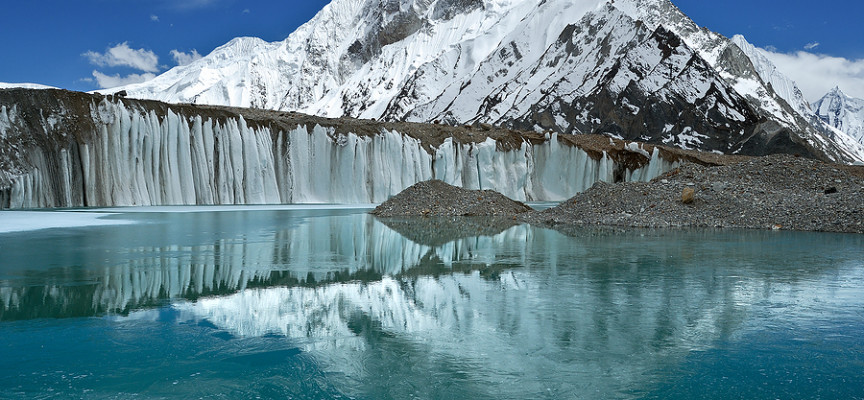Without a sliver of doubt, Pakistan is indeed one of the most naturally beautiful and breathtaking regions in the world. With main attractions like the Mohenjo-daro, Harappa, Taxila sites along with Himalayan hill stores, mountain peaks going beyond 7000 miles, ancient architecture in Chitral and Hunza valleys, imposing domes of mosques in Lahore and Multan, the intriguing civilization of the Kalash people, the site of battle by Alexander The Great in Punjab and so much more, Pakistan has a lot to offer the curious eyes of a tourist. It is reported that before the global economic crisis, 500,000 tourists flocked to the country annually. This, however, has decreased tremendously post-2008 when visitors reported the land to be unsafe and highly volatile due to the militancy in the country.
The top five tourist sites in Pakistan include Taxila, Lahore, The Karakoram Highway, Karimabad and the Lake of Saiful Malook. In order to rebrand Pakistan back to its positive image, the Prime Minister introduced a campaign called “Visit Pakistan” in 2007, which involved a list of festivities related to religion, culture, society, regional sports, craft shows and much more. The World Economic Forum’s Travel & Tourism Competitiveness Report shows that Pakistan remains among the top 25% of countries ranked as most attractive for tourism purposes.
After the floods in 2010 and the insurgency plus terrorism rampant in Swat Valley, the tourism industry in Pakistan collapsed due to the bad law and order situation and dysfunction in the country. According to reports, 101 hotels on the bank of Swat River were flushed out in the floods of 2010, while 6 domestic tourists lost their lives during the natural chaos. The Ecotourism Society Pakistan (ESP) estimation indicated around 550 million dollars’ worth of damage done to the tourism industry of Pakistan.
But it is positive to remember the attractions in Pakistan. They include Archaeological Ruins at Moenjodaro of the Indus Valley Civilization, 1st century Buddhist ruins at Takht-i-Bahi and neighbouring city remains at Sahr-i-Bahlol, the ruins of Taxila from the Gandhara civilization, the Lahore Fort and Shalimar Gardens in Lahore, historic monuments of the ancient city of Thatta, the ancient fort of Rohtas.
After the partition, Pakistan also received sites that were rich with history and civilization. They include destinations such as the Faisalabad Clock Tower and the Eight Bazaars, Altit Fort in Hunza Valley, 17th and 18th Century Tombs of Talpur Mirs, Samadhi of Ranjit Singh, Mughal built tomb of Asaf Khan, Empress Market (built during the rule of the British Empire), the tomb of Qutb-ud-din Aibak (the first Sultan of Delhi and founder of the Slave dynasty), the Sikh built Mohatta Palace, the 18th Century Omar Hayat Mahal, the 19th Century Italian Chateau Noor Palace, and the Derawar Fort.
There is a need to revamp the industry of tourism in Pakistan. This can only be possible when – and if – the government of Pakistan chooses to do something about the elements of terrorism and extremism within the country. Without effectively countering these factions that constantly harass and harm people, it would be naïve to expect tourists coming down to the land.


so nice place
I just love Pakistan… although never been there… I have visited India several times. but the tourist visa process is confusing and difficult. Hope in the near future they change the system to make much more tourist friendlier.
Hi Hilarion,
Wonder if you can get this message of mine. Yes you are right the visa process is a bit challenging but it entirely depends where you come from. Even if you visit India or China, you can pay a short visit via Wahga border from India or via Khunjerab pass from China. Should you need any assistance, I would be glade to provide. I am a tourism professional.
One must visit the scenic places of Pakistan before you plan a trip abroad.